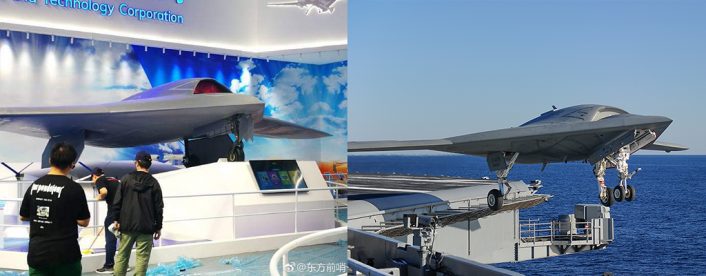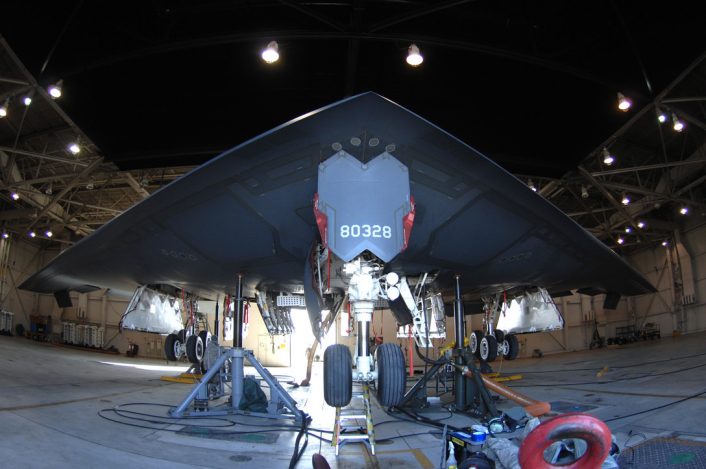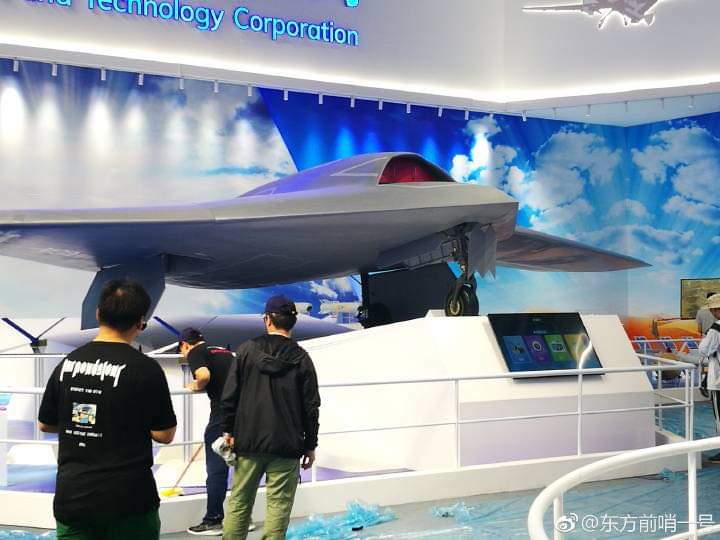A drone with a significant resemblance to the Northrop Grumman X-47B has been unveiled at China’s biggest airshow.
A new drone model with stealth features has been unveiled at China Aerospace Science and Industry Corporation (CASIC) booth at the China International Aviation & Aerospace Exhibition and Airshow China, in Zhuhai.
Initially hidden under a tarp, the unmanned aircraft has eventually been unveiled, showing a striking resemblace to some pretty famous American unmanned aerial systems (UAS). We don’t know wheter it is a full scale mock-up or just a scale model of an existing or future prototype; still, the available images provide enough details for some analysis.
Look! A new version of the latest Lockheed Martin drone… oh whoops. pic.twitter.com/GhQIvVLTkR
— Sean Gallagher (@thepacketrat) November 1, 2018
Some observers suggested the Chinese drone is a sort of copy of the famous Lockheed Martin RQ-170 Sentinel, the stealth drone captured by Iran in 2011 and then reverse-engineered by Tehran: according to the information circulating on the Chinese Defense forums, a group of 17 Chinese experts flew to Iran 4 days after only four days after the Sentinel drone had crash landed in Iran during a spy mission, not only to inspect, but also to collect and bring back to China some key components of the RQ-170.
While it’s extremely likely that China had the opportunity to inspect the drone and copy the circuitry, lenses, sensors that probably survived the mysterious crash landing, the shape of the article exhibited at Zhuhai seems to be more similar to the Northrop Grumman Unmanned Carrier Air Vehicle demonstrator (UCAS-D) aircraft of the X-47B program than the Lockheed Martin RQ-170.
Chinese clone of RQ-170. pic.twitter.com/Eql2JfK7vF
— Alert 5 (@alert5) November 4, 2018
In their article on the Chinese drones at the Zhuhai Airshow, The War Zone’s Joseph Trevithick and Tyler Rogoway, describing the large flying wing-shaped aircraft hidden under tarps said:
“From what little we can tell of the planform under the mats, it appears to be similar in configuration to something roughly akin to an X-47B, but with more slender outer wings and less of accentuated ‘cranked kite’ configuration.”
Indeed, the new drone seems to be largely based on the X-47B with some modifications, including slightly different intake (taller than that of the Northrop Grumman demonstrator aircraft – in fact, this is the one thing that seems to really “come” from the RQ-170), wingspan/planform, nose section and landing gear (the one of the American UCAV was designed for arrested landings on aircraft carriers). T

The front nose gear bay door reminds the one of another quite famous Northrop Grumman stealth aircraft: the B-2 Spirit bomber.

Anyway, until more images and details about this new drone emerge we can just add that considered all the cyber attacks targeting Lockheed Martin stealth projects as well as other US aerospace industries in the last years, we can’t rule out the possibility that Chinese hackers were able to put their hands on some useful technical drawings of some American UAVs, useful to “clone” U.S. shapes, planforms and components. And possibly improve them or at least try to.
Top image credit: Chinese Internet via @Alert5













